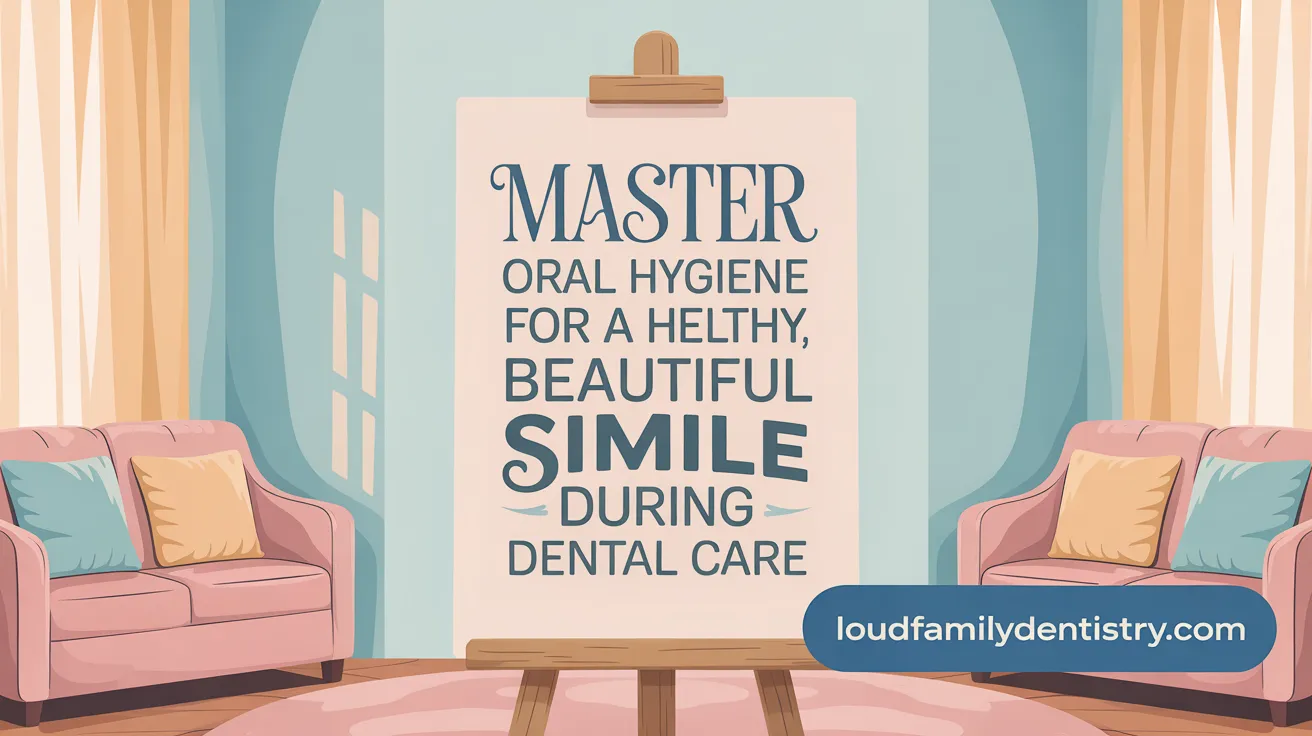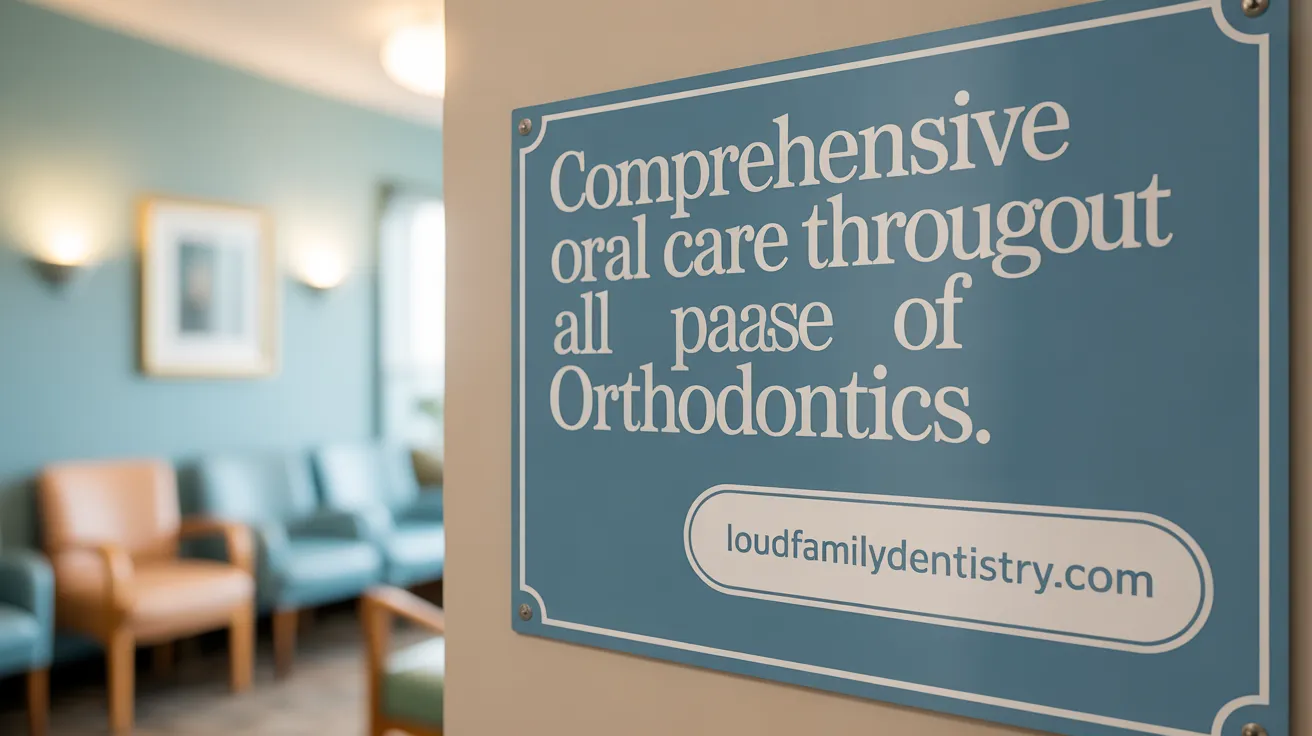Starting Your Journey to a Healthier Smile
Orthodontic treatment can significantly improve your dental alignment and oral health, but it comes with special care requirements. Whether you have traditional braces or clear aligners, understanding how to properly care for your teeth and appliances is crucial to achieving the best results and avoiding complications like cavities and gum disease. This guide will provide comprehensive insights on maintaining oral hygiene, managing discomfort, dietary tips, and handling common orthodontic challenges.
Mastering Oral Hygiene During Orthodontic Treatment

What are the best practices for maintaining oral hygiene during orthodontic treatment?
Maintaining excellent oral hygiene during orthodontic treatment requires diligent brushing and flossing routines. Patients should brush their teeth thoroughly at least twice daily with a soft-bristled toothbrush and fluoride toothpaste. It’s especially important to clean around brackets and wires with gentle circular motions at a 45-degree angle, ensuring no food or plaque remains trapped. Flossing daily using a floss threader or orthodontic floss is essential to remove debris between teeth and beneath archwires. Additional tools like interdental brushes or water flossers can help reach difficult areas and improve cleaning efficiency. Rinsing with an antimicrobial or fluoride mouthwash can further help reduce bacteria, strengthen enamel, and freshen breath. Avoid sticky, hard, or sugary foods, which can damage appliances and foster plaque buildup. Routine visits to the dentist and orthodontist allow for monitoring and adjustments, ensuring ongoing health. Using orthodontic wax can also soothe irritation and enhance comfort. Overall, disciplined oral hygiene and adherence to professional advice facilitate healthy teeth and successful orthodontic results.
Dietary Guidelines for Orthodontic Patients
 When wearing braces or aligners, paying close attention to diet is crucial to ensure successful treatment and prevent damage. Patients should steer clear of hard, sticky, and sugary foods, which can harm appliances or stain aligners. Foods like nuts, caramel, chewing gum, taffy, and hard candies should be avoided.
When wearing braces or aligners, paying close attention to diet is crucial to ensure successful treatment and prevent damage. Patients should steer clear of hard, sticky, and sugary foods, which can harm appliances or stain aligners. Foods like nuts, caramel, chewing gum, taffy, and hard candies should be avoided.
For those with traditional braces, it's best to consume soft, easy-to-chew foods such as cooked vegetables, pasta, soft fruits like bananas or sliced apples, yogurt, and dairy products. Hard items like crusty bread, whole apples, or raw carrots (unless cut into smaller pieces) should be avoided or bitten into carefully.
Removable aligners like Invisalign require extra attention. Aligners should always be taken out before eating to prevent damage and staining. After meals, thorough brushing and cleaning of teeth and aligners are vital before reinserting them.
Water is the safest beverage to help rinse away food particles and keep the mouth clean. It’s advisable to minimize sugary, acidic drinks like soda or fruit juices, which increase the risk of cavities.
In summary, choosing softer foods, avoiding difficult-to-clean items, and maintaining good oral hygiene are important. These precautions help protect the appliances, prevent staining, and support effective orthodontic treatment.
Managing Discomfort and Orthodontic Emergencies
 Orthodontic treatment often involves adjustments and appliances that can lead to minor emergencies or discomfort. Recognizing how to handle these issues promptly can prevent complications and make the experience more comfortable.
Orthodontic treatment often involves adjustments and appliances that can lead to minor emergencies or discomfort. Recognizing how to handle these issues promptly can prevent complications and make the experience more comfortable.
Common problems like loose brackets, poking wires, or broken retainers are usually manageable at home. For loose brackets, patients can temporarily secure them with orthodontic wax or avoid pulling on the bracket. Poking wires can be smoothed or repositioned using a pair of tweezers or trimmed carefully with nail clippers. Applying orthodontic wax over brackets or wires provides a protective barrier against irritation.
In case of severe soreness, irritation, or trauma, prompt communication with the orthodontist is vital. Rinsing the mouth with warm saltwater helps reduce inflammation, while over-the-counter pain relievers like ibuprofen or acetaminophen can ease discomfort. It's recommended to avoid aspirin or NSAIDs immediately after adjustments, as they may affect tooth movement.
Preventive advice like wearing a mouthguard during sports, avoiding hard or sticky foods, and maintaining excellent oral hygiene reduces the risk of emergencies. Regular check-ups allow orthodontists to identify and resolve issues early, ensuring continuous progress.
How can common issues and emergencies related to braces and orthodontic devices be handled?
- Use orthodontic wax to cover loose brackets or poking wires.
- Carefully trim protruding wires with sterilized nail clippers.
- Reposition displaced wires with clean tweezers.
- Rinse the mouth with warm saltwater for soreness.
- Contact the orthodontist if appliances are severely damaged or if pain persists.
What are the best ways to manage discomfort and pain during orthodontic treatment?
- Take recommended over-the-counter pain medications following professional guidance.
- Apply orthodontic wax on brackets and wires as needed.
- Use cold compresses or ice packs on the cheeks to reduce swelling and discomfort.
- Stick to soft foods during initial days after adjustments.
- Maintain good oral hygiene to prevent additional irritation.
Managing issues effectively involves combining home care strategies with professional guidance, ensuring your orthodontic journey remains as smooth and comfortable as possible.
Comprehensive Care: Before, During, and After Orthodontic Treatment

How should one care for their teeth before, during, and after orthodontic procedures?
Proper oral hygiene is vital at all phases of orthodontic treatment. Before starting, ensure your teeth and gums are healthy by visiting your general dentist for a thorough cleaning and any necessary treatment. Maintain excellent brushing habits, using a fluoride toothpaste and a soft-bristled toothbrush, brushing all surfaces of your teeth and around your braces or aligners for at least two minutes twice daily.
During orthodontic treatment, it’s essential to be diligent. Brush teeth and braces after every meal or snack, paying special attention to brackets and wires where food particles and plaque can accumulate. Floss daily using floss threaders or orthodontic floss to clean between teeth and under archwires, removing debris that brushing cannot reach. Auxiliary tools like interdental brushes and water irrigators can make cleaning more effective.
Post-treatment, continue with a strict oral hygiene routine. Wear your retainer as directed, keep up with regular brushing and flossing, and schedule routine dental checkups for professional cleanings. Avoid hard, sticky, and sugary foods that might damage your appliances or promote decay.
Consistently following these practices ensures long-term dental health and preserves the results of orthodontic work.
What are the expectations and typical procedures related to orthodontic treatment and oral health?
Orthodontic treatment is designed to straighten teeth, correct bites, and improve overall oral function. Patients can expect initial appointments to include comprehensive examinations, X-rays, and treatment planning sessions. The process generally involves the placement of braces or clear aligners, which may cause temporary discomfort during adjustments.
Throughout treatment, regular visits—every 6 to 10 weeks—are necessary for adjustments and evaluations. These visits allow the orthodontist to monitor progress, tighten appliances, and resolve issues like loose brackets or poking wires. Patients should expect some initial soreness, manageable with over-the-counter pain relievers and soft foods.
Additionally, communication about realistic outcomes and potential risks is crucial. Dental professionals will provide instructions on diet, cleaning techniques, and appliance care, aiming to achieve the best aesthetic and functional results.
How can overall oral health be maintained during orthodontic treatment?
Maintaining good oral health during orthodontics involves consistent, thorough cleaning routines. Brushing with fluoride toothpaste for two minutes twice daily is the foundation, with special attention around brackets, wires, and hard-to-reach areas.
Daily flossing with appropriate tools like floss threaders is essential to remove plaque from between teeth—areas that are often neglected during brushing alone. Incorporating adjuncts such as interdental brushes, water irrigators, and fluoride rinses can greatly enhance cleaning efficiency.
Avoiding foods that are hard, sticky, or sugary is critical to prevent appliance damage and decay. Foods like caramel, popcorn, nuts, and hard candies should generally be avoided, while soft foods like yogurt, smoothies, and cooked vegetables are recommended.
Regular visits to your orthodontist and dentist give opportunities for professional cleaning, monitoring, and addressing any emerging issues promptly. Maintaining these good habits promotes healthy gums, prevents white spots, cavities, and other dental problems, ensuring the success of orthodontic treatment and a healthy, bright smile afterwards.
Additional Recommendations for a Safe and Successful Orthodontic Experience

Maintaining appointments and monitoring progress
Regular visits to the orthodontist every 6 to 10 weeks are essential. These appointments allow for adjustments, monitoring progress, and addressing any issues like loose brackets or poking wires promptly. Consistent checkups help ensure the treatment stays on track and achieves optimal results.
Protecting braces during sports and activities
Wearing a mouthguard during contact sports is strongly recommended to safeguard braces and prevent injuries to your teeth and lips. Custom-fitted or boil-and-bite mouthguards provide the best protection. Avoiding hard and sticky foods also minimizes the risk of damaging braces during daily activities.
Using retainers effectively after treatment
Once braces are removed, retainers are crucial for maintaining your new smile. Follow your orthodontist’s instructions diligently—wear retainers full-time initially, then gradually switch to nighttime wear. Regular cleaning and proper storage of retainers prevent damage and ensure their effectiveness, helping prevent teeth from shifting back to their original positions.
Achieving a Healthy, Beautiful Smile Through Careful Maintenance
Orthodontic treatment is a rewarding journey that requires dedication to oral hygiene, careful dietary choices, and prompt management of any issues or discomfort. By following expert recommendations on cleaning techniques, using the right dental products, and attending regular orthodontic appointments, patients can prevent complications such as cavities, gum disease, and damage to appliances. Managing discomfort with appropriate remedies and protecting your braces during activities further supports successful outcomes. After treatment, continuing good oral care and retainer use ensures the lasting beauty and health of your smile. With consistent care and professional guidance, you can enjoy the benefits of a straight, healthy smile for years to come.
References
- Living with Braces: Embracing the Orthodontic Journey
- Dental Hygiene with Braces - Nationwide Children's Hospital
- Caring For Braces: You're On Your Way To A Healthy Smile - Colgate
- Orthodontic Care in Colorado Springs & Monument, CO
- Taking Care of Your Braces - Webb Goldsmith Orthodontics
- Tips From an Orthodontist on caring for Your Teeth After Treatment
- Maintaining Your Orthodontic Health: Tips for Braces Care
